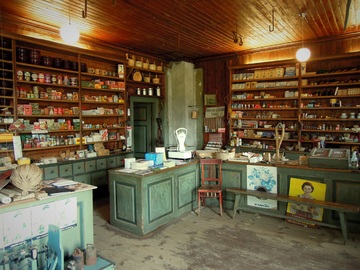
When I was a little boy, I was fascinated by a building that stood at the northwest corner of Jonesboro Road and Chambers Road. It had been a store that my grandmother ran but had been closed for years when I came along. They kept it locked, but I had been in there a few times. I remember one time we found some old caps that went into a toy gun, and we spent some time afterward popping them by hitting them with rocks. I couldn’t help but wonder how cool it would have been had I been around when the store was open.
I thought I could have wandered down the aisle and loaded up on junk food and soft drinks whenever I wanted. My dad’s cousin, Charles Chaffin, and I were kindred spirits in that regard. Daddy said that Charles would get off the bus with them sometimes, do a little shopping, and tell my grandmother to put it on his tab. He would then walk home from there, a nearly 3-mile walk.
Before my grandmother had her store, Alice Exum had a store a couple of miles west. My friend, Gene Morris, said his father told him that the school bus would stop at Ms. Exum’s store, and any child that had a nickel could get off and get a Coke there. Can you imagine a bus driver doing that today?
Those country stores were essential to people in those days. With our colossal grocery stores today, it isn’t easy to imagine how much the grocery store has changed in the past hundred years. One hundred years ago, you didn’t go pick your items off the shelves. You took a list, and the grocer picked your items for you. Almost everything at the grocery store was shelf-stable. Fresh produce came from produce stands or shops. Meats were purchased from a butcher. Dairy products were delivered to your door.
This started changing in 1916 when the very first self-service supermarket opened in Memphis, Tennessee. It was called the Piggly Wiggly, and you can still find a few of them in the Atlanta area today. That certainly revolutionized the industry. Even in my lifetime, there have been innovations. In the 1960s and 1970s, most grocery stores were 10,000-15,000 square feet. The average size today is 45,000 square feet. We’ve also gone from not only self-service shopping to self-service checkout.
The small stores were destined to be pushed out by major corporate big-box stores, the same as many other small businesses. These big corporations are built to dominate markets, and they have certainly done that. The one thing that scared the big grocery store chains was an even bigger market dominator. That turned about to be a valid fear as Wal-Mart became the biggest seller of groceries. And what keeps Wal-Mart up at night? Amazon. We could go full circle where you make a list, and the items are picked and even delivered right to your door.